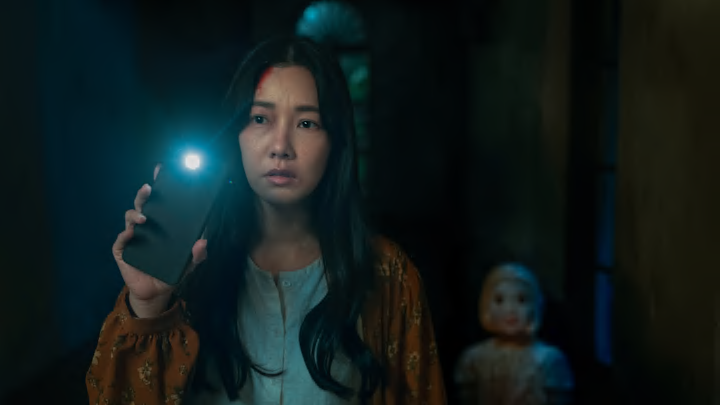Don’t Come Home (2024), originally released in Malaysia as Ya Klap Ban, strikes a rare chord, fusing unnerving atmosphere with tightly coiled drama. The six-episode Thai horror-thriller quietly built a loyal following before exploding on international streaming charts.
The story follows Nok (Lalita Sornkaew), a young woman from Bangkok returning to her rural home after a family emergency. What begins as a daughter's dutiful visit morphs into a waking nightmare, as cryptic messages, strange nocturnal sounds, and the town’s disturbingly unified insistence that she “shouldn’t stay” pull her deeper into a layered mystery. The hook is simple, but the storytelling is anything but.
From the first frame, director Thitipong Kittipornchai makes pacing a central tool. He resists cheap scares in favor of building dread through stillness, natural sound, and subtly invasive camera work. The rural Thai setting—sunlit rice paddies by day, shadow-choked lanes by night—becomes a character in itself, rendered with both affection and menace. The result is a world that feels lived-in yet claustrophobic, where every familiar corner could hide something watching.
Lalita Sornkaew’s performance is the series’ anchor. As Nok, she balances wide-eyed vulnerability with flashes of steely resolve, creating a heroine who feels genuinely reactive to her environment. Opposite her, Phanuwat Boonchai delivers a performance (as an enigmatic local police officer) that thrives on restraint. He uses small gestures and long pauses to convey more than any monologue could.
The script, penned by Niran Chansiri and Maliwan Phetchaiyaphum, is a slow-burn tapestry of folklore, guilt, and generational secrets.
Don't Come Home is a win for Netflix's horror line-up. It’s the kind of narrative arc that invites close attention. A passing line in episode one takes on a chilling new meaning by episode five. In a marketplace often driven by immediacy, Don’t Come Home rewards patience with payoffs that feel earned.
Production values are robust without being overpolished. The sound design, in particular, is a standout - distant knocking and overly synchronized insect hums work on the subconscious. The uneasy rhythm of footsteps fading into silence, leaving only tension. The score leans on traditional Thai instruments, blending them with minimalist electronics for a sonic texture that feels both ancient and modern.
Cinematographer Siripong Meesuk employs a long, deliberate pace, giving scenes a naturalistic texture while allowing tension to coil in the background. Filmed in Bangkok and Phang Nga, Thailand, where the famed Jarukanant Mansion adds to the feelings of isolation. Shadows and darkness swallow half the frame, creating a visual language that communicates isolation and encroaching danger without a word.
If Don't Come Home has a fault, it’s that its commitment to mood over constant action may test viewers who crave relentless momentum. But for those willing to lean into its measured rhythm, the final two episodes deliver an emotional and narrative crescendo that lingers well past the credits.
Ultimately, Don’t Come Home is a potent reminder of what the horror-thriller form can achieve when craft, patience, and cultural specificity converge. It’s as much about the spaces between scares as the scares themselves, and in that restraint lies its staying power.
Individually, each episode is worth watching; collectively, the series succeeds as a chilling, beautifully crafted slow-burn that rewards attentive viewing.
